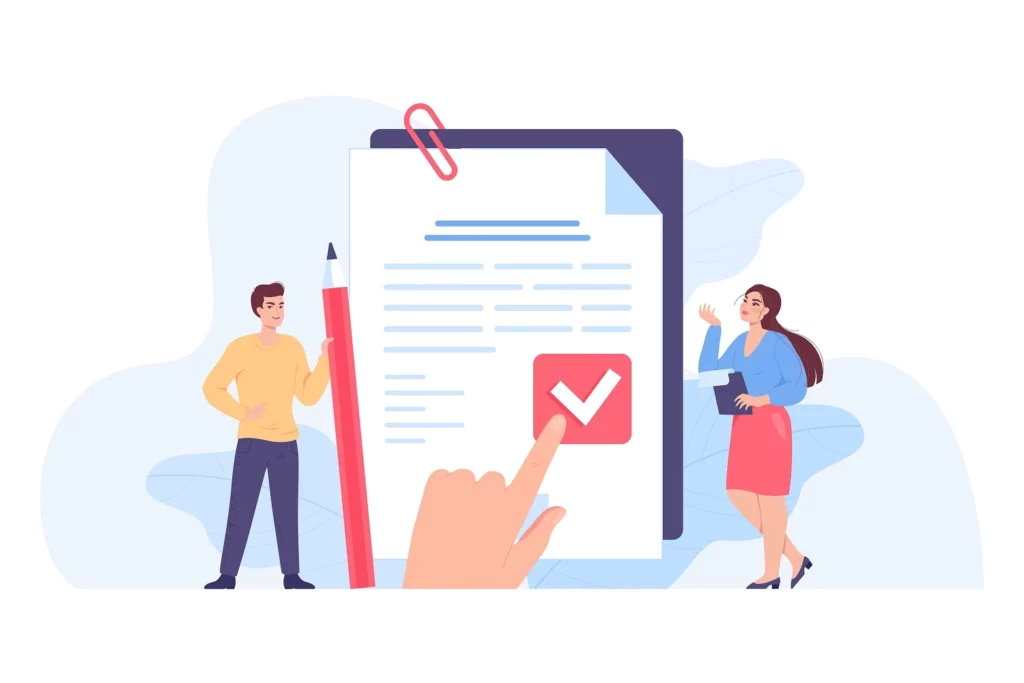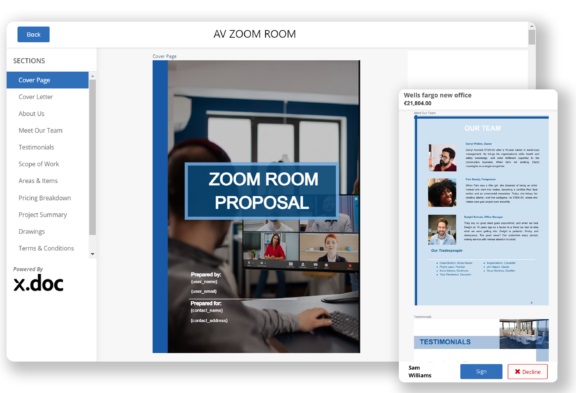Request For Proposal (RFP) Writing Essentials, Templates, & Strategies To Solicit Bids Successfully
Wondering how to start with a business proposal request? Sit back and relax, we are here to assist you with everything you want to know about drafting a perfect request for proposal. A proposal request is not complex to write.
It is only to find a balance between what to write and what not in an RFP, that makes a difference. An ideal RFP template consists of you simply explaining your needs and appealing to the vendors to enlist what they can provide for the same in the follow-up proposal.
Simple right? It will be simpler to outline the RFP once you are done reading this article.
What is a Request for Proposal?
A business or an organization often needs to outsource some services or products for their company. There are various ways to do so but writing an RFP is the ideal method. Therefore, if you run a business or work in a company, you need to understand the dynamics of Request For Proposal.
An RFP is a business document drafted by a company that enlists its requirements and requests various suppliers to quote their bids for the products and services, the company demands.
What Makes an RFP Different from Other Documents?
Who writes an RFP? It is sent by a business that needs to outsource certain products or services. RFP is sent to multiple or a particular business that provides the requirements. So, what is the purpose of writing an RFP? The main purpose is to sort out a supplier with reasonable cost and quality service. Therefore, generally, an RFP is sent to multiple suppliers to choose the best among them.
How Do You Write a Winning Request For Proposal (RFP)?
An accurate business proposal will always get you the best deal in terms of price and service. Here are some tips for writing an RFP that will always work in your favor.
Realize the Scope and Budget of the Project
Before actually writing a request, determine all the important factors such as the scope of your project, what exactly your objective is, and how much you are looking to spend on it. If possible take a look at a request for proposal examples, particular to your industry.
Doing such research will provide you with a sense of clarity. It is very common to keep your request precise and accurate. This will help you and the provider in terms of knowing exactly what needs to be done.
Firmly Introduce your Company
Giving a good introduction of your company will always work in your favor. Mention a brief history of your company, showcase your market presence, and enlist some of the famous clients.
Services you Seek
Simply explain what services you are looking for in a brief for the provider to understand. It is important to not explain in a complex manner.
Therefore, if possible, mention the services in bullet points so that it is easy to comprehend and there is no sense of confusion. The key is to be accurate in explaining the services you seek, not over or under-explaining the requirements.
Selection Eligibility and Project Timeline
Establish transparency for your requirements and state all the eligibility factors such as skill, experience, technical expertise, and a balanced team you are looking for the vendor to provide. Similarly, if you are just dealing with equipment, make sure to mention every specification in the request for proposal.
Also, ask the vendor to provide a suitable timeline, method, and cost for the work you are seeking. This will surely help you to choose the best among the many proposals you receive for your project management.
Proofread and RFP Submission
Never send a request for a proposal before a final check. Sending a shabby and grammatically incorrect proposal might not get you the right deal. In the long run, this habit is also not good for your company’s presence in the market.
Also, mention a due date for getting a proposal for your RFP. This will ensure that the project is duly on track.
Must-Try Winning Proposal Templates by x.doc
What is the Ideal Format of a Request For Proposal RFP?
Wondering what are the elements of an RFP? An ideal RFP does not have a particular format. An RFP format depends on the company’s requirements. However, some essential elements are a must in the RFP template.
- Project Overview
- Project Goals
- Scope of Work
- Project Challenges
- Selection Eligibility and Criteria
- Submission Requirements and Deadlines
What are the Benefits of a Request For Proposal?
Writing an RFP has many advantages for you as well as your business.
- You will always be aware of various solutions to your particular requirements that you get from multiple vendors.
- It provides ample learning opportunities to understand the market and new technologies and methods in a better way.
- The best advantage of writing a request is an easy review of pricing and choosing the most reasonable vendor.
Why Use x.doc to Plan your Request For Proposal Documents?
If you are planning on writing a project request and wondering what platform you must use, then x.doc is simply what you need. It allows you to draft your proposal with a flashing speed. You are always in a vision of your creativity with a single scrollable document pattern.
You never lose track of your proposal with in-built document tracking. Your proposal is not going to be boring as you will have ample styling features and templates to choose from and work with.
Not only that, x.doc gives you an in-built library to choose your products with specifications and images that you may seek from the vendor.
Project accurate costs with multiple in-built methods to choose from. Sign deals digitally with legally binding signatures to get set go with the project as soon as possible.
It is simple, accurate, and a true game-changer proposal management software for designing business proposals.
100+ Free Proposal Templates
- Create Winning Proposals
- 10x Your Closing Rate
- Efficient Document Tracking
- Legally Binding Digital Signatures
- Best Editing & Styling Features
Conclusion
Writing a proposal request for your business is not a hard task but a significant one indeed. Therefore, make sure to clearly assess your requirements before actually starting to write one. Your request for proposal should be clear, precise, and not over-explained.
Instead of going strongly into the details focus on easily stating your requirements. So, the vendors exactly know what they need to include in their proposal for the deal.
FAQ's
Ever wondered when would you use an RFP? An RFP is written to seek a business proposal by a particular vendor or provider for various requirements of a company.
A request enlists various products or services required from the vendor and also mentions the selection criteria and requirements for the same.
A company that sends the request awaits business proposals from various vendors. Multiple vendors are compared for the most favorable price, service records, and technical experience. The most ideal vendor is given the contract, and the project gets a green flag.
Proposal requests are created by organizations to get the best possible bid from the market for their project. The organization compares vendors in terms of cost, experience, and reliability.
The request for proposal process involves:
- Sending an RFP to multiple vendors
- Reviewing the business proposals sent by the vendors
- Selecting the vendor with the best bid and experience
- Commencement of the project
Generally, an RFQ is sent when the business knows exactly what to buy and all they need is a price quotation from the vendor, On the other hand, an RFP is sent by a business who are seeking a definite problem-solving technique or expertise by the vendor along with the price.
A request for information is sent by a company to assess and compare the capabilities and techniques of various vendors. The main key is to choose a vendor with a logical approach to problem-solving. A company may write a request for proposal after this.




